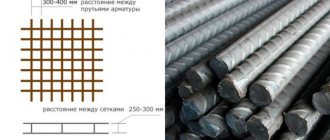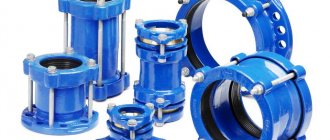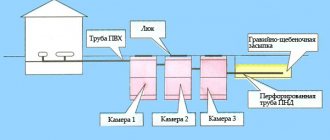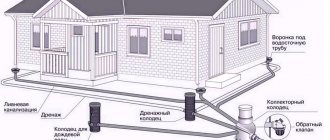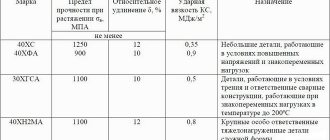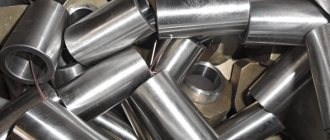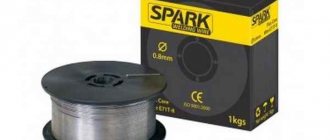Not a single industrial or civil construction project is built without the use of reinforced concrete products and structures. To enhance strength and reliability, concrete is reinforced; a reinforcement frame is placed in its “body”. Knitting wire is the most popular material for connecting metal rods to each other to create a frame; this is what will be discussed in this article.
Application and production technology
Wire for tying reinforcement is most popular in monolithic construction. With the help of concrete and reinforcement, buildings of the most unusual shapes are created, thanks to its technology and the integrity of the structure from the foundation to the roof. It is in this area that more than one object can do without the use of wire.
The wire is used for reinforcement of such reinforced concrete structures as:
- Foundations (strip, slab, pile).
- Walls, columns, beams and lintels.
- Stairs.
- Monolithic floors.
- Floor screeds.
The most important parameters of wire for tying reinforcement are flexibility and strength. It must provide a reliable connection of intersecting reinforcement elements, and at the same time be soft and pliable for quick work.
These characteristics are ensured by the properties of the material, production technology and subsequent heat treatment.
The material for production is low-carbon steel. Wire is a product of the process of drawing a workpiece through dies with a given diameter. Under the influence of pressure and in the process of plastic deformation of the workpiece, the steel structure is refined and improved, and a hardened hardened layer is formed on the surface.
However, after such a procedure, significant internal stresses remain in the metal, which do not allow the resulting product to bend; it will be rigid and brittle. Therefore, in order to be able to use the wire for knitting, it is subjected to heat treatment - annealing. During the annealing process, relaxation and stress relief occur. Thus, the result is a durable, easy-to-use product.
What is tying wire?
We are talking about a product obtained from wire rod - a billet of low-carbon steel. Knitting wire is a reliable and elastic fastening element that bends easily and locks into the desired position. Supplied in large coils and used in the assembly of foundation frames, floors, and floor screeds. Unlike welding, which degrades the quality of the metal in the heating zone, connecting reinforcement with wire does not have this disadvantage. It is resistant to deformation and bending loads, does not corrode, which has a positive effect on strength.
Where is tying wire used?
The main area of application is construction, which involves connecting metal products into a durable and wear-resistant frame, but wire for tying reinforcement is also used in other areas:
- Production of steel ropes.
- Production of masonry nets, barbed wire, chain-link.
- Installation and packaging of goods.
- Securing cargo during transportation.
Labeling and classification
All produced knitting wire is manufactured in accordance with GOST – 3282-74 “Low-carbon steel wire for general purpose”. The document regulates all technical characteristics - type, dimensions, manufacturing accuracy, mechanical properties of the material.
GOST specifies the classification of wire according to the following criteria:
- By type of processing - heat-treated or not.
- Depending on the type of coating - with or without galvanized coating.
- In terms of manufacturing accuracy - with increased or normal accuracy.
- According to temporary tensile strength (only for non-annealed) – groups I and II.
Depending on the conditions under which the heat treatment was carried out, the wire can be light or black. Black is obtained by annealing in air; under the influence of oxygen, oxides and scales are formed on the surface of the metal. The light one undergoes heat treatment in an environment of inert gases, its surface is clean, but in terms of technological parameters it is no different from the black one.
Wire can be produced with a diameter from 0.16 to 10 mm without coating, and 0.2 – 6 mm with coating.
A coil of the most popular galvanized binding wire with a diameter of 1.2 mm, weighing 25 kg.
Wire markings include:
- diameter – indicated in millimeters;
- type of treatment – letter O, in case of heat treatment;
- manufacturing accuracy - letter P with increased accuracy;
- surface type – C (light), B (Black)
- presence of zinc coating - 1C or 2C (the number indicates the class).
All produced wire is wound onto coils or spools, undergoes mandatory control, is marked and confirmed with a quality certificate. The products required for use are selected based on the labeling. Each type of knitting “thread” has its own purpose based on the conditions of its use.
Characteristics of tying wire
This material is manufactured with a cross-sectional diameter from 0.5 to 6 mm. Stainless steel knitting wire can be galvanized. Then its thickness increases to 10 mm. To increase strength and elasticity, the product is subjected to heat treatment. When choosing a material that has not been fired, it is necessary to take into account the tensile strength (N/mm²) and cross-sectional area:
- 10 mm
– 390-690; - 8 mm
– 390-780; - 4.5–5 mm
– 390-830; - 3.2–4.5 mm
– 440-930; - 2.5–3.2 mm
– 540-1080; - 1–2.5 mm
– 590-1270; - less than 1 mm
– 690-1370.
What wire is better to knit reinforcement
The main selection criteria are the diameter of the reinforcement and the tool used. For wire knitting, collets are used, as well as manual, semi-automatic and automatic hooks.
Homemade hook for tying reinforcement with wire.
The main task of the wire is to securely fix the reinforcement; the thicker it is, the thicker the connecting element should be. The minimum diameter used for knitting work is 0.8 mm; it is used for tying reinforcement whose diameter does not exceed 10 mm. Sizes from 1 mm to 1.2 mm are most often used in private low-rise construction. And when constructing buildings with significant loads, it is recommended to use 1.4-1.6 mm wire. To perform knitting work, it is enough to use material of normal accuracy.
Advice from the master! I have been engaged in monolithic construction for more than 10 years and I want to say that the most convenient wire for crocheting reinforcement has a diameter of 1.2 mm. Suitable for tying rods of all diameters, just for reinforcement with a diameter of 16 mm and above, take two wires.
Types of knitting wire
This material differs in:
- The presence or absence of a protective coating
. Galvanized binding wire is kept in baths of molten zinc, due to which it becomes less susceptible to corrosion, which is very important when used in places exposed to aggressive external environments. - Heat treatment
. There are untreated and annealed tows. Annealed knitting wire is marked with the letter “O”. Elevated temperature changes the very structure of the material, reducing the internal stress of the steel and thereby increasing elasticity and mechanical strength. In this case, annealing can be dark or light. The first endows the material with scale. - Strength class
. It is determined by the type of alloys used in manufacturing. Knitting wire V-1 is made from low-carbon steel, but the high-strength analogue V-2 has an increased number of alloying components. A regular cord is used to connect non-tensioned frames, but a strong cord is used to tie the prestressed reinforcement.
This material can be purchased in a skein or in a reel. The first weighs from 15 to 250 kg and consists of one piece of wire. The second has a mass from 500 to 1500 kg. There are no more than three segments in it. Recently, steel knitting wire with rings has become very popular. This building material has the form of a reel, consisting of 1–5 thousand sections 8, 10, 12 or 14 cm long. The ends of each are crowned with rings, which facilitate the work of installers and significantly speed up it.
Advantage of wire over welding
When comparing welding technology with bonded welding, we note the following advantages of wire connection:
- ease of working with the material - the process of knitting reinforcement is feasible for everyone;
- performing reinforcement directly in the formwork;
- convenient adjustment of the position of the rods - if necessary, you can correct the geometry of the frame by untying several structural elements;
- absence of welded joints - when heated, the metal’s initial characteristics decrease, it becomes weaker, the weld is more susceptible to corrosion;
- affordable price.
The only disadvantages include the unsteadiness of the connected frame, but if you supplement the reinforcing structure with braces, it will become stiffer.
Selection of tie wire
The criteria for selecting a harness are as follows:
- Construction technology
. Where the use of welding is not strictly specified, tie wire is used to bind the reinforcement elements. - Terms of Use
. If the material will be influenced by an aggressive environment, then it is better to choose the galvanized variety. - Reinforcement diameter
. The wire for a knitting gun should be thicker, the more massive the structural elements undergoing adhesion. - Price
. Galvanized material is more expensive than usual. Another alternative is copper-nickel alloy wire, but its use is justified only in luxury construction.
Tie wire thickness
This is a very important parameter on which the strength and reliability of the entire building depends. The most popular reinforcement sizes today are 8-12 mm. To knit it, wire with a diameter of 1.2-1.4 mm is used. If a material of a smaller cross-section is used, there is a high risk of its rupture. Black knitting wire with a diameter of 1.6 mm and above will not allow you to tighten the knot so that it does not come apart and remains strong.
Hook for tying wire
Installers do not work with the material with their bare hands; they have a special tool for tying wire. It can also be different:
- Hook
. On sale you can find a variety of options for this device, ranging from the simplest to semi-automatic analogues. - Gun
. This is a modern tool that allows you to fully automate the knitting process. One press of a button and the connection is complete. However, not every builder can afford to buy it.
